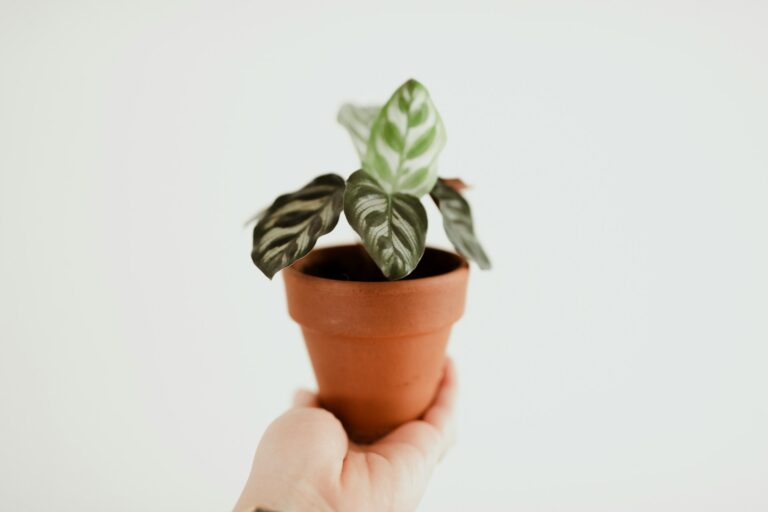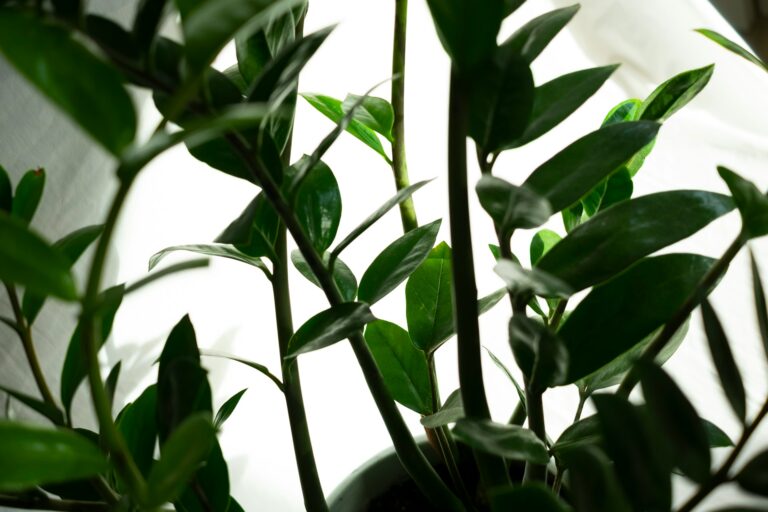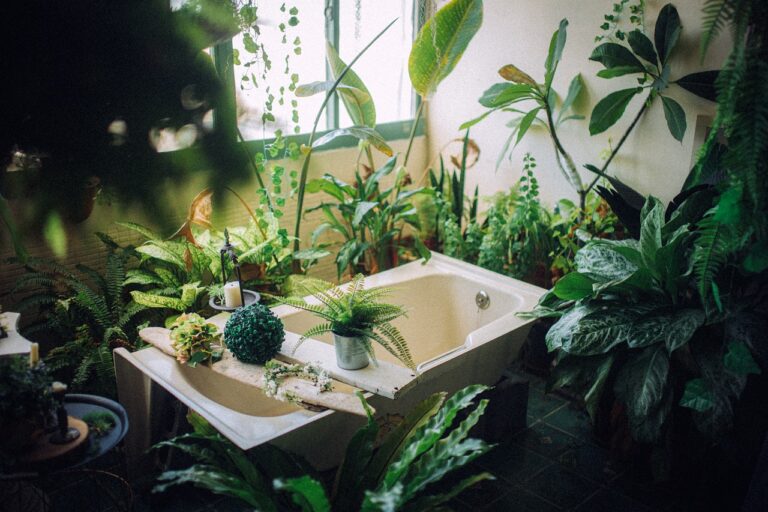Lavender plants are known for their beautiful purple flowers and soothing fragrance. They offer a delicate and abundant summer with their colorful, bright flowers.
However, if you notice your lavender plant turning yellow, it can be concerning. Yellowing of the leaves is a common symptom of stress or disease in lavender plants. As a plant owner, it is important to understand why your lavender plant may be turning yellow so that you can take appropriate action to address the issue and help your plant thrive.
The common causes of yellow leaves on lavender plants are overwatering, high soil nitrogen content, poor soil quality, and many others. Once the lavender plant leaves turn yellow, diagnose and fix the problem immediately.
In this article, we will explore some of the most common causes of yellowing in lavender plants and offer tips on diagnosing and treating the problem.
What are the causes of a lavender plant turning yellow?
One thing you have to understand is that when the lavender plant leaves turn yellow, it’s an immediate sign that your plant has a problem. If you check it carefully, you can find other minor issues that are not easily detectable.
So. what causes lavender plant yellowing?
Overwatering
Overwatering is one of the most common reasons lavender plant leaves turn yellow. Lavender plants are adapted to grow in well-draining soil and do not tolerate wet soil conditions for prolonged periods.
When the soil has water constantly, it can lead to root rot, which causes the roots to become mushy and unable to absorb nutrients properly. As a result, the plant’s leaves will start to turn yellow (usually the lower leaves, then the other leaves turn yellow), and the plant may even wilt and die.
Root rot can cause the whole lavender plant to turn yellow. Feel the leaves and stem; if they are soggy when you touch them, it’s a sign of overwatering. If you check the root, they look brown and aren’t firm.
Additionally, overwatering can also lead to nutrient deficiencies in the soil. When the soil is too wet, the plant’s roots cannot absorb nutrients properly, which can cause the leaves to turn yellow due to a lack of chlorophyll. The yellowing may start at the tips of the leaves and gradually spread to the rest of the plant.
To prevent overwatering, ensure that you use well-draining soil. Good soil absorbs the required amount of water and drains the excess it doesn’t need. Also, ensure your container has drainage holes at the bottom for the excess water to drain.
Avoid watering your lavender plant too frequently, and let the soil dry out slightly between watering. You can purchase a moisture meter to measure the moisture content in the soil or use the finger test to determine the time to water the plant.
Check the root for any damage if your plant is affected by root rot. Cut off any affected parts, including roots, stems, and leaves to avoid spreading to other parts of the plant. Let the plant dry before repotting. Clean the pot and use fresh potting soil.
Over Fertilized / High Nitrogen Content.
Overfertilizing is another cause of the lavender plant turning yellow. One of the notorious nutrients is nitrogen.
As you know, fertilizer is essential for plant growth, but too much of something is harmful. When you overfertilize a plant, the excess nutrients build up in the soil, making it difficult to absorb water and nutrients.
The nutrient build can lead to fertilizer burn. It’s a condition that causes leaves to turn yellow and eventually die. Other symptoms of fertilizer burn include;
- Leggy plant — the stem will appear weak and can’t stand upright.
- No flowers — high nitrogen content causes the plant to stop producing flowers.
- Chlorosis — leaf chlorosis is the yellowing of leaves. It happens when the plant lacks the nutrients, lacks nutrients to make the leaves green.
Since lavender plant requires minimal nutrient requirements to grow, you don’t have to use too much fertilizer.
You can use one of these three methods to fix a lavender plant from overfertilizing.
- First, you can flush the soil to remove the excess fertilizer. Learn how to flush without overwatering your plant.
- Secondly, repot the plant and use fresh soil with the appropriate nutrients.
- Finally, you can stop fertilizing, let the plant grow, and use up all the excess nutrients in the soil. Ensure you add more water than before to the plant, but ensure the excess water drains off.
Lack of sunlight
Sunlight is essential for the growth of a lavender plant. Lack of sunlight can cause lavender plant yellowing. You will notice this if the plant has stretched toward the direction of sunlight and the leaves are yellow.
The lavender plant leaves turn yellow due to the stress of searching for sunlight. As the leaves stretch, they use more energy than required; thus, they adapt by changing their color.
To fix this problem, you must move the plant to an area with sunlight.
Humidity
Humidity levels can also play a role in causing lavender plant leaves to turn yellow. Lavender plants prefer a dry climate with low humidity. So, high humidity levels can cause the leaves to wilt and turn yellow.
When the air is too moist, the plant’s leaves cannot transpire properly, which can cause a buildup of excess moisture in the plant’s tissues. This can make the plant more susceptible to fungal and bacterial diseases that can cause the yellowing of lavender leaves.
In addition, high humidity levels can also attract pests, such as spider mites and aphids, which can also cause lavender plant yellowing.
To fix humidity, ensure that you leave a spacing of about 24 to 36 inches between plants during planting. That ensures good airflow between plants. On the other hand, you can move the plant to an area with low humidity levels.
You can also place the plant in a sunny area to reduce moisture build up. Besides that, you can improve air circulation in the room by purchasing a dehumidifier or using a fan to blow air into the plant area.
Pests and diseases
You already know that once pests and diseases attack your plant, they can die quickly. But the common sign you should look for is the yellowing of leaves. There are other signs, such as a powdery substance on the leaves and small spots.
When you notice any of these signs, start fixing your plant by removing the pests on the leaves. You can use a pesticide to kill them. The plant will likely die if you don’t address the problem immediately.
Also, isolate the plant to avoid spreading to other healthy plants.
Poor Soil Drainage
Lavender plants thrive in well-draining sandy soils. Sand soil is known for draining water quickly and doesn’t hold moisture for long.
Using soil with poor drainage can cause root rot, which causes the lavender plant leaves to turn yellow. Sometimes the plant dies if no action is taken to fix the problem.
To grow lavender successfully, you have to use high-quality soil. You can amend your soil or purchase fresh potting soil with good drainage. To fix your soil, you need to add sand soil to a proportion of 30% sand and 70% loam soil. Some people go 50:50 to reduce any chances of slow draining.
How to care to prevent lavender plant yellowing
To care for your lavender plant and avoid the yellowing of lavender leaves, here are several things you can do:
- Provide well-draining soil: Lavender plants prefer well-draining soil that is not waterlogged. Ensure the pot or planting area has adequate drainage holes, and use a well-draining potting mix.
- Water properly: Avoid overwatering your lavender plant, and let the soil dry out slightly between watering. And when it’s time to water, water deeply so the roots can absorb water properly.
- Fertilize correctly: Use a balanced fertilizer that provides all the necessary nutrients in the correct proportions. Follow the recommended dosage and frequency of fertilization.
- Prune regularly: Pruning your lavender plant regularly will help promote healthy growth and prevent the plant from becoming too woody.
- Provide proper sunlight: Lavender plants require full sun for at least 6 hours daily. Make sure to place the plant in a sunny location.
- Avoid high humidity levels: Lavender plants prefer a dry climate with low humidity. Provide proper ventilation and airflow around the plant, and use a dehumidifier if necessary.
Conclusion
The lavender plant is a unique plant to grow in your garden. It’s tricky and requires your attention to thrive. When you notice the leaves turning yellow, act on it fast to fix it before it spreads to the other parts of the plant.
We have provided you with the common causes of lavender plant yellowing. Ensure that you confirm the problem before you fix it. That can help you determine and fix the correct problem quickly.



